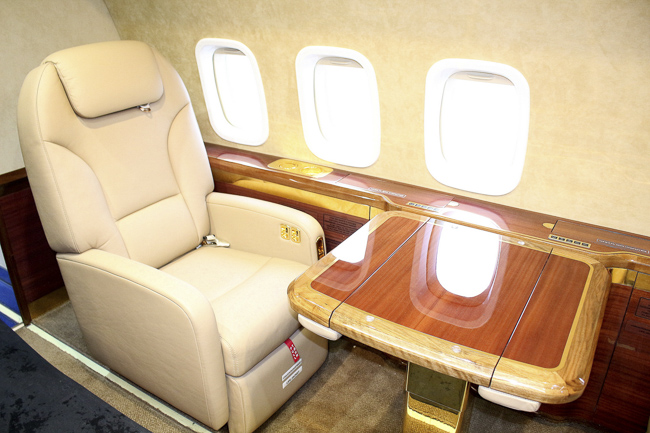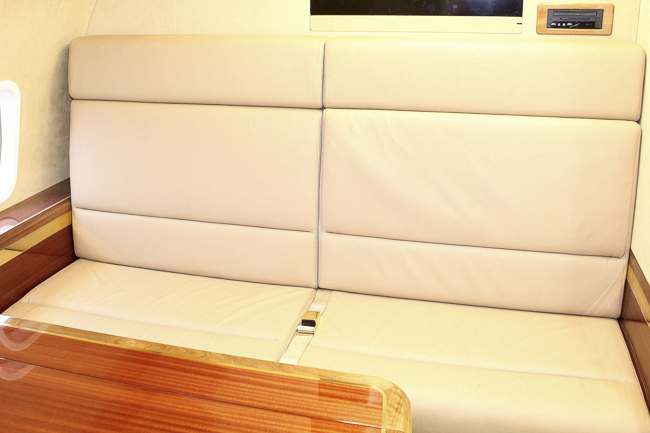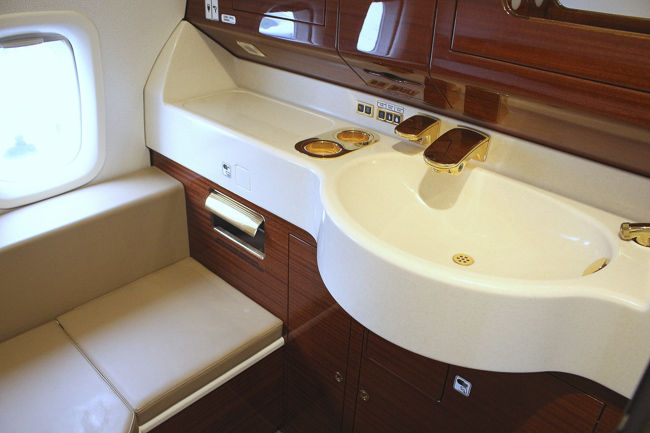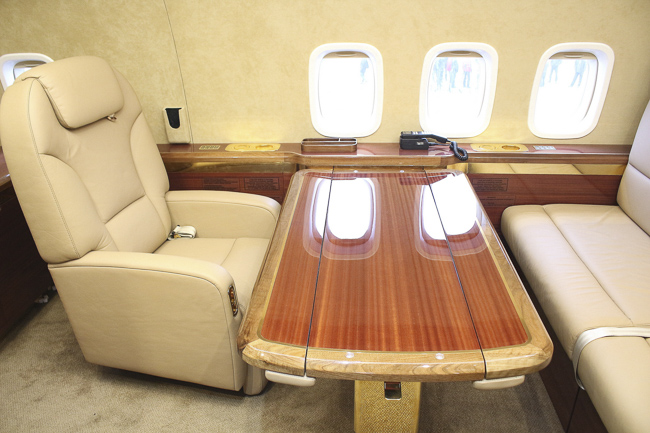The aircraft arriving from Ulyanovsk with registration number RA-64045 is named after the legendary Soviet designer and scientist Sergei Pavlovich Korolev. The aircraft is designed to carry up to 53 passengers. All the conditions for comfortable and comfortable delivery of space expedition members and accompanying persons to the launch site have been created on board the aircraft. The passenger cabin of the aircraft is divided into three zones, equipped with cabins for the rest of the crews, comfortable armchairs, sofas, tables and wardrobes for storage.
The event for the transfer of the aircraft was attended by the head of the Cosmonaut Training Centre Pavel Nikolaevich Vlasov, the executive director of the manned space programs of the Roscosmos State Corporation Sergey Konstantinovich Krikalev and the general director of the leasing company Ilyushin Finance Co. (IFC) Alexander I. Rubtsov.
The Head of the Cosmonaut Training Centre Pavel Nikolaevich Vlasov: “We have not received a new aviation technology since the 90s, we have been using the Tu-134, Il-76 and L-39 for a long time. In 2012, it was decided to replace the Tu-134, which is already 40 years old. The main tasks assigned to this class of aircraft are the delivery of crews to the cosmodrome, the return of crews after landing at the base, flights to visual and instrumental observation, flights to practice the skills of cosmonauts and delivery of state commissions to the place of launching manned space flight. We expect that on these aircraft, which are much more economical, as compared with the Tu-134, we will deliver commissions to the Vostochny space centre and to Kourou. I hope that the crews will take the new planes to the summer July start. ” Maintenance and operation of aircraft will be held according to the rules of civil aviation with the relevant requirements. The aircraft will be serviced on the basis of the Chkalovsky airfield. The company Cosmos, which is part of Roscosmos, will provide operation.
Sergey Krikalev, Director of Manned Space Programs of Roscosmos State Corporation: “The work on determining the appearance of this aircraft has been going on since 2013. A lot of work was carried out in conjunction with the Tupolev company. We proceeded from the many years of experience of the CPC and the astronauts themselves. The fact is that when you arrive after the flight, the long-term delivery takes place in a horizontal position and cabins have been made for this requirement. The number of cabins was increased to 6, due to the increase in the estimated number of crew members. They made the plane, taking into account that it could fly to the Vostochny cosmodrome. From the point of view of medicine, when the crew returns, it is constantly under the supervision of doctors. From the moment of the transfer of the crews from the capsule to the medical tent, the process of rehabilitation and control, the adaptation of man to earthly conditions begins. The plane has enough equipment to provide medical support for the crews after landing, to assist and conduct medical experiments that are associated with the adaptation of astronauts to the conditions of gravity. It is possible to connect computers to the on-board electrical network, ”- said Sergey K. Krikalev, Director of Manned Space Programs of the Roscosmos State Corporation. In the process of creating aircraft for the CPC, an enormous amount of work was carried out. The result of these works is that the liner is equipped with modern technical equipment and is able to perform many important tasks and functions. In addition, the planes are equipped with a satellite communications system that provides telephone and Internet access during the flight.
The general director of the leasing company Ilyushin Finance Co. (IFC), Alexander Ivanovich Rubtsov: “For us it is a pride that we, with joint efforts, with the participation of Tupolev Commercial Bank, the Aviastar-SP plant, the Rosaviainter company, created this aircraft in which all wishes of our customers - Roscosmos and Cosmonaut Training Centre are considered. It was a very difficult task - suffice it to say that during the construction of the aircraft, we had to make about 2000 changes to the design documentation, which was not easy to do. This is a multi-purpose aircraft - here it is possible to transport both astronauts and passengers who are sent to a meeting of a government commission. In addition, passenger seats here can be replaced by special medical modules for the transport of the sick and wounded. The plane can perform a lot of important tasks, provides the most comfortable transportation for astronauts and, most importantly, it has a greater range - more than 8 thousand km in order to reach any space centres in our country. We hope that these planes will serve for a long time in the interests of our space industry.” The Tu-204-300 aircraft, equipped with two Russian PS-90A engines, is a modification of the Tu-204-100V aircraft with a fuselage shortened by almost 6 meters, take-off weight is increased to 107.5 tons. Tu-204-300 complies with chapter IV of the ICAO Annex on noise in the field and the requirements of Annex 16 (volume 2) of the ICAO norms on the emission of harmful substances due to engine design, as well as selection of noise absorbing devices.
The aircraft is certified for flights on international air routes, as well as for flights in the conditions of zone navigation RNAV-1, RNAV-5 and the reduced standards of vertical separation RVSM. The flight range of the Tu-204-300 is about 9,000 km. In the near future, the second Tu-204-300 aircraft for the CPK (RA-64044), named after Yuri Alekseevich Gagarin, will arrive at the Chkalovsky airfield. "Yuri Gagarin" and "Sergey Korolev" aircraft will be identical to each other and are designed to perform the same tasks. Here, at the Chkalovsky airfield, the development of aircraft operation, the training of technical personnel and the creation of a full-fledged base for servicing these aircraft will be held.





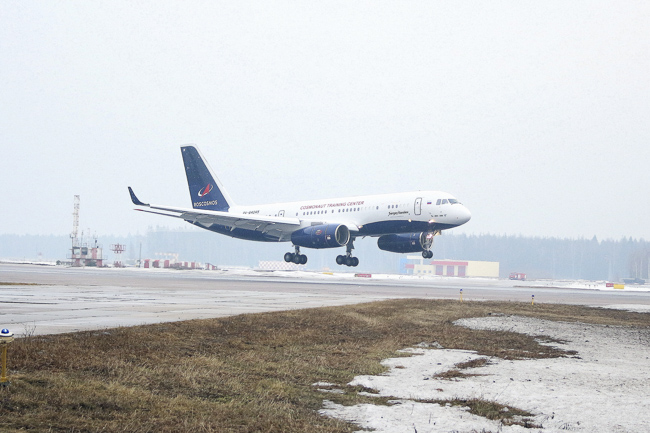
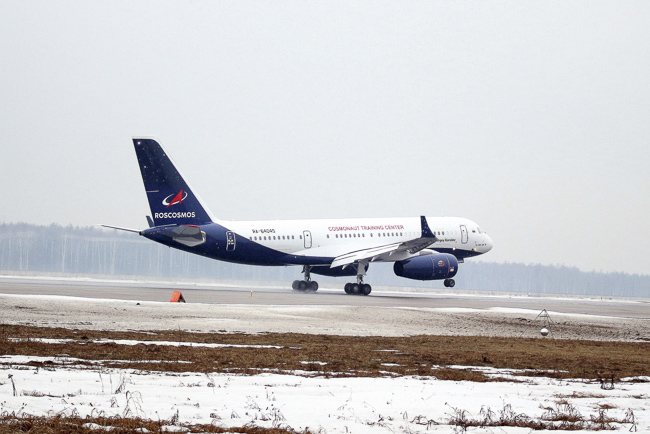
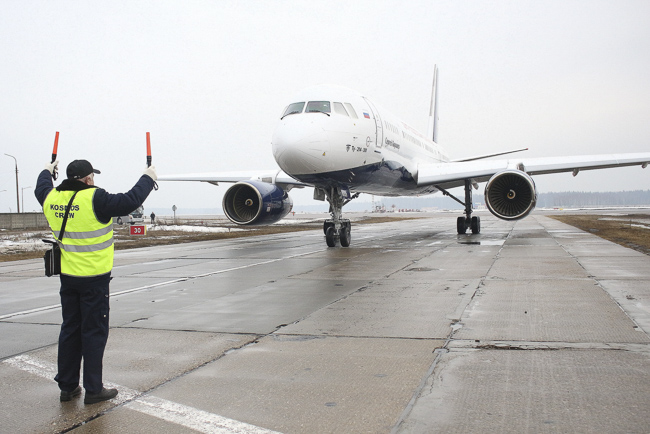

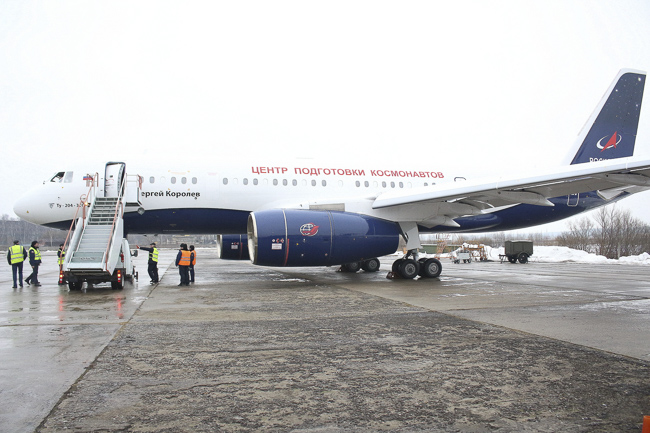
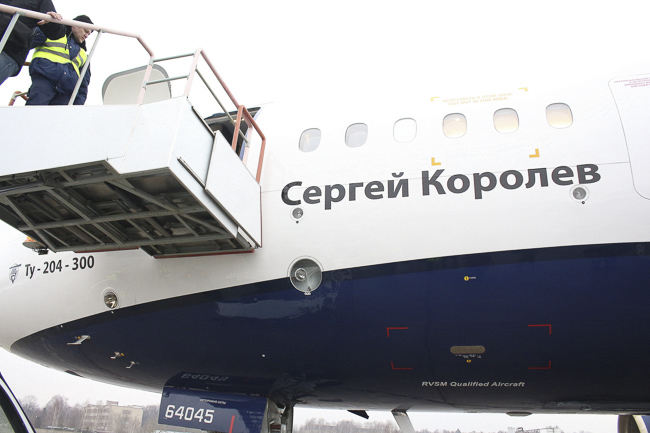
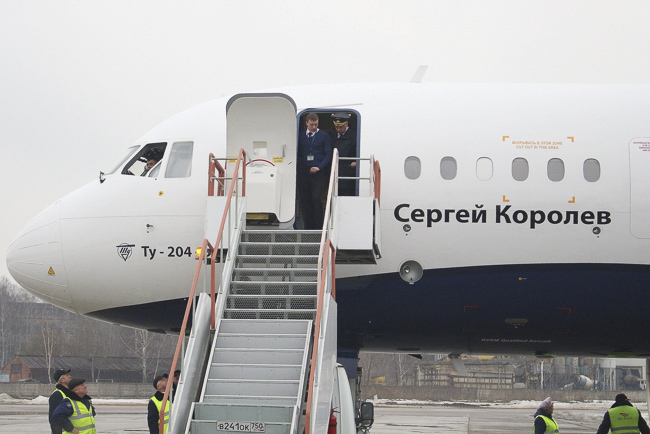
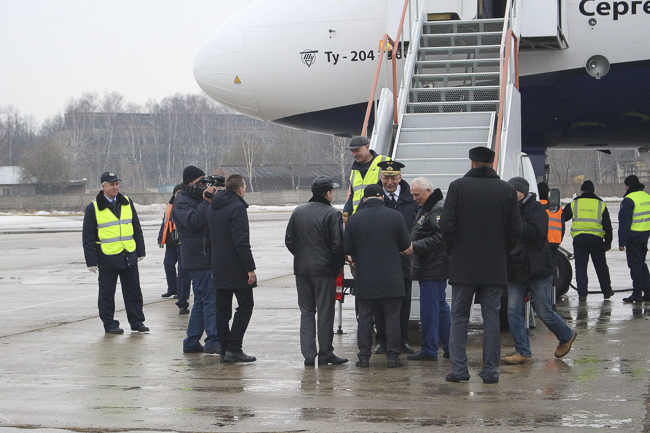

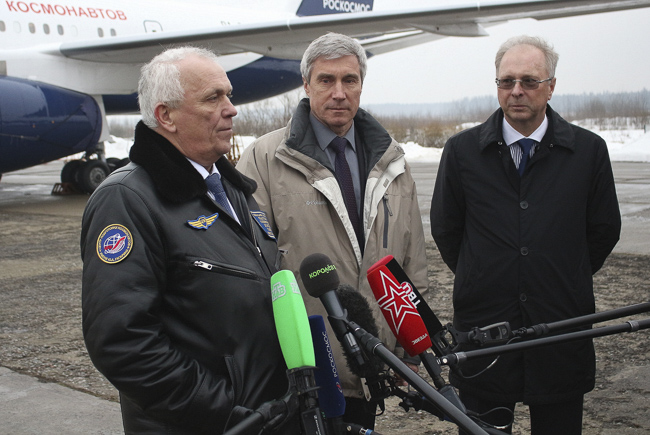
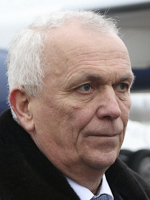 The Head of the Cosmonaut Training Centre Pavel Nikolaevich Vlasov: “We have not received a new aviation technology since the 90s, we have been using the Tu-134, Il-76 and L-39 for a long time. In 2012, it was decided to replace the Tu-134, which is already 40 years old. The main tasks assigned to this class of aircraft are the delivery of crews to the cosmodrome, the return of crews after landing at the base, flights to visual and instrumental observation, flights to practice the skills of cosmonauts and delivery of state commissions to the place of launching manned space flight. We expect that on these aircraft, which are much more economical, as compared with the Tu-134, we will deliver commissions to the Vostochny space centre and to Kourou. I hope that the crews will take the new planes to the summer July start. ” Maintenance and operation of aircraft will be held according to the rules of civil aviation with the relevant requirements. The aircraft will be serviced on the basis of the Chkalovsky airfield. The company Cosmos, which is part of Roscosmos, will provide operation.
The Head of the Cosmonaut Training Centre Pavel Nikolaevich Vlasov: “We have not received a new aviation technology since the 90s, we have been using the Tu-134, Il-76 and L-39 for a long time. In 2012, it was decided to replace the Tu-134, which is already 40 years old. The main tasks assigned to this class of aircraft are the delivery of crews to the cosmodrome, the return of crews after landing at the base, flights to visual and instrumental observation, flights to practice the skills of cosmonauts and delivery of state commissions to the place of launching manned space flight. We expect that on these aircraft, which are much more economical, as compared with the Tu-134, we will deliver commissions to the Vostochny space centre and to Kourou. I hope that the crews will take the new planes to the summer July start. ” Maintenance and operation of aircraft will be held according to the rules of civil aviation with the relevant requirements. The aircraft will be serviced on the basis of the Chkalovsky airfield. The company Cosmos, which is part of Roscosmos, will provide operation.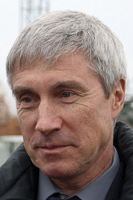 Sergey Krikalev, Director of Manned Space Programs of Roscosmos State Corporation: “The work on determining the appearance of this aircraft has been going on since 2013. A lot of work was carried out in conjunction with the Tupolev company. We proceeded from the many years of experience of the CPC and the astronauts themselves. The fact is that when you arrive after the flight, the long-term delivery takes place in a horizontal position and cabins have been made for this requirement. The number of cabins was increased to 6, due to the increase in the estimated number of crew members. They made the plane, taking into account that it could fly to the Vostochny cosmodrome. From the point of view of medicine, when the crew returns, it is constantly under the supervision of doctors. From the moment of the transfer of the crews from the capsule to the medical tent, the process of rehabilitation and control, the adaptation of man to earthly conditions begins. The plane has enough equipment to provide medical support for the crews after landing, to assist and conduct medical experiments that are associated with the adaptation of astronauts to the conditions of gravity. It is possible to connect computers to the on-board electrical network, ”- said Sergey K. Krikalev, Director of Manned Space Programs of the Roscosmos State Corporation. In the process of creating aircraft for the CPC, an enormous amount of work was carried out. The result of these works is that the liner is equipped with modern technical equipment and is able to perform many important tasks and functions. In addition, the planes are equipped with a satellite communications system that provides telephone and Internet access during the flight.
Sergey Krikalev, Director of Manned Space Programs of Roscosmos State Corporation: “The work on determining the appearance of this aircraft has been going on since 2013. A lot of work was carried out in conjunction with the Tupolev company. We proceeded from the many years of experience of the CPC and the astronauts themselves. The fact is that when you arrive after the flight, the long-term delivery takes place in a horizontal position and cabins have been made for this requirement. The number of cabins was increased to 6, due to the increase in the estimated number of crew members. They made the plane, taking into account that it could fly to the Vostochny cosmodrome. From the point of view of medicine, when the crew returns, it is constantly under the supervision of doctors. From the moment of the transfer of the crews from the capsule to the medical tent, the process of rehabilitation and control, the adaptation of man to earthly conditions begins. The plane has enough equipment to provide medical support for the crews after landing, to assist and conduct medical experiments that are associated with the adaptation of astronauts to the conditions of gravity. It is possible to connect computers to the on-board electrical network, ”- said Sergey K. Krikalev, Director of Manned Space Programs of the Roscosmos State Corporation. In the process of creating aircraft for the CPC, an enormous amount of work was carried out. The result of these works is that the liner is equipped with modern technical equipment and is able to perform many important tasks and functions. In addition, the planes are equipped with a satellite communications system that provides telephone and Internet access during the flight.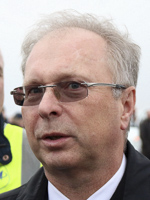 The general director of the leasing company Ilyushin Finance Co. (IFC), Alexander Ivanovich Rubtsov: “For us it is a pride that we, with joint efforts, with the participation of Tupolev Commercial Bank, the Aviastar-SP plant, the Rosaviainter company, created this aircraft in which all wishes of our customers - Roscosmos and Cosmonaut Training Centre are considered. It was a very difficult task - suffice it to say that during the construction of the aircraft, we had to make about 2000 changes to the design documentation, which was not easy to do. This is a multi-purpose aircraft - here it is possible to transport both astronauts and passengers who are sent to a meeting of a government commission. In addition, passenger seats here can be replaced by special medical modules for the transport of the sick and wounded. The plane can perform a lot of important tasks, provides the most comfortable transportation for astronauts and, most importantly, it has a greater range - more than 8 thousand km in order to reach any space centres in our country. We hope that these planes will serve for a long time in the interests of our space industry.” The Tu-204-300 aircraft, equipped with two Russian PS-90A engines, is a modification of the Tu-204-100V aircraft with a fuselage shortened by almost 6 meters, take-off weight is increased to 107.5 tons. Tu-204-300 complies with chapter IV of the ICAO Annex on noise in the field and the requirements of Annex 16 (volume 2) of the ICAO norms on the emission of harmful substances due to engine design, as well as selection of noise absorbing devices.
The general director of the leasing company Ilyushin Finance Co. (IFC), Alexander Ivanovich Rubtsov: “For us it is a pride that we, with joint efforts, with the participation of Tupolev Commercial Bank, the Aviastar-SP plant, the Rosaviainter company, created this aircraft in which all wishes of our customers - Roscosmos and Cosmonaut Training Centre are considered. It was a very difficult task - suffice it to say that during the construction of the aircraft, we had to make about 2000 changes to the design documentation, which was not easy to do. This is a multi-purpose aircraft - here it is possible to transport both astronauts and passengers who are sent to a meeting of a government commission. In addition, passenger seats here can be replaced by special medical modules for the transport of the sick and wounded. The plane can perform a lot of important tasks, provides the most comfortable transportation for astronauts and, most importantly, it has a greater range - more than 8 thousand km in order to reach any space centres in our country. We hope that these planes will serve for a long time in the interests of our space industry.” The Tu-204-300 aircraft, equipped with two Russian PS-90A engines, is a modification of the Tu-204-100V aircraft with a fuselage shortened by almost 6 meters, take-off weight is increased to 107.5 tons. Tu-204-300 complies with chapter IV of the ICAO Annex on noise in the field and the requirements of Annex 16 (volume 2) of the ICAO norms on the emission of harmful substances due to engine design, as well as selection of noise absorbing devices.